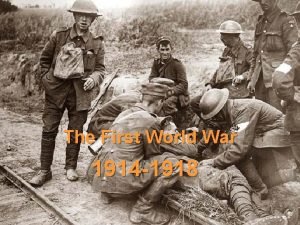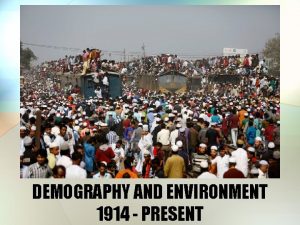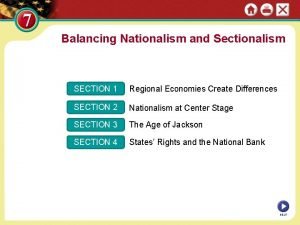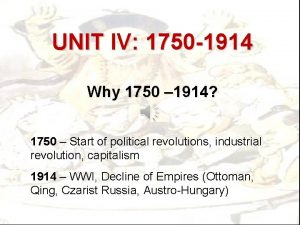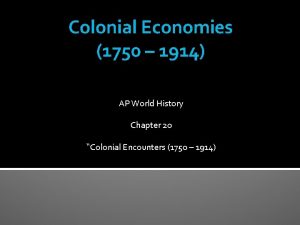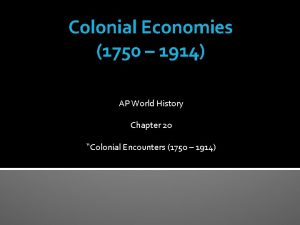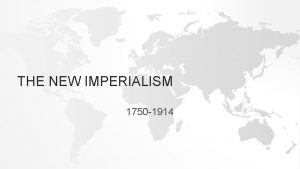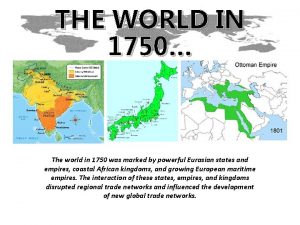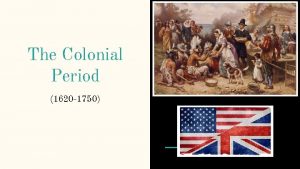Colonial Economies 1750 1914 AP World History Chapter




















- Slides: 20

Colonial Economies (1750 – 1914) AP World History Chapter 24 “Colonial Encounters (1750 – 1914)

Economies of Coercion: Forced Labor and the Power of the State �Forced labor was often used to meet the demands of the colonial state Examples: Building railroads Constructing government buildings Transporting goods

Economies of Coercion: Forced Labor and the Power of the State �Most infamous cruelties of forced labor = in the Congo in the early 1900 s Governed by King Leopold II of Belgium Forced villagers to collect rubber they had daily rubber quotas If rubber quotas were not met, villagers were tortured and/or killed ▪ Shot, ears/limbs cut off, tied up with ropes around their necks and dragged away, etc.

Economies of Coercion: Forced Labor and the Power of the State �Several colonial states used “cultivation systems” Peasants required to cultivate 20% or more of their land in cash crops such as sugar or tobacco to meet their tax obligation Cash crops sold to government contractors at fixed, low prices Cash crops resold in the world market for a very high profit Sorting Tobacco Leaves in Java, 1930 s

Economies of Cash-Crop Agriculture � In some places, colonial rule created conditions that facilitated and increased cash-crop production to the advantage of local farmers � Example: British authorities in Burma encouraged rice production among small farmers Ended the prohibition on rice British Authorities Surveying Rice Production in Burma exports Provided irrigation and transportation facilities Passed laws that encouraged private ownership of small farms

Economies of Cash-Crop Agriculture �Results of these policies in Burma: Population boomed in Burma AND in other parts of Asia Rice exports soared Small farmers able to buy their own land, build nice homes, buy imported goods, etc. Standards of living improved sharply

Economies of Cash-Crop Agriculture � Profitable cash-crop farming = in the southern Gold Coast British territory in West Africa Modern-day Ghana African farmers themselves developed this export agriculture Planted cacao trees in huge quantities and became the world’s leading supplier of cocoa by 1911 Drying Cocoa Beans in the Gold Coast

Economies of Cash-Crop Agriculture � Problems with this success: Labor shortage = led to employment of former slaves who were exploited Labor shortage = led to migration of workers from the interior of Africa to the Gold Coast caused ethnic and class tensions Some men married women for their labor power, but didn’t take care of them Many colonies only specialized in one or two cash-crops hurt them when world market prices dropped Breaking Open (Cracking) the Pods

Economies of Wage Labor: Working for Europeans � Millions of colonial subjects across Asia and Africa sought employment in European-owned plantations, mines, construction projects, and homes Needed money Lost land they needed to Workers in a South African Mine support their families Sometimes forced by colonial authorities

Economies of Wage Labor: Working for Europeans � European-financed plantations in Southeast Asia that grew sugarcane, rubber, tea, tobacco, and so on employed hundreds of thousands of workers Workers = subject to very strict control Often housed in barracks Paid very little (and women made even less) Disease was common high death rates Tea Plantation in Ceylon

Economies of Wage Labor: Working for Europeans � Even more land taken from local people in Africa than in Southeast Asia Ex: South Africa in 1913 whites were 20% of the population, but controlled 88% of the land � “Squatters” = Africans who Workers Harvesting Leaves on an African Tea Plantation stayed and worked for the new landowners as the price of remaining on what had been their own land

Economies of Wage Labor Working for Europeans � Another source of wage labor for many = mines � Major tin mines in Malaysia Miners = mostly impoverished Chinese workers Worked on strictlycontrolled 3 -year contracts Horrible living conditions Rampant diseases Dangerous work = many accidents High death rates Chinese Tin Miners

Economies of Wage Labor: Working for Europeans �Major gold and diamond mines in South Africa Workers = mainly Painting of Two African Miners impoverished Africans Recruited on short-term contracts Lived in all-male prison-like barracks surrounded by barbed wire Forced to return home periodically so they didn’t establish a permanent family life near the mines

Large Colonial Cities � Examples: Nairobi, Cairo, Singapore, etc. � Racially segregated � Often unsanitary � Greatly overcrowded � Seen as meccas of opportunity for people all across the social spectrum � Western-educated people found opportunities as: teachers, doctors, professional specialists, clerks in European business offices, workers in European government bureaucracies, etc. Singapore in the 1920 s

Large Colonial Cities � Working-class elite = skilled workers on railways or in ports Also included workers in factories that processed agricultural goods or manufactured products such as beer, cigarettes, furniture, etc. � Urban poor worked as: construction workers, rickshaw drivers, food sellers, domestic servants, prostitutes, etc. Cairo in the 1920 s The Main Railway Station

African Women and the Colonial Economy � In pre-colonial times African women: Were active farmers Were responsible for planting, weeding, and harvesting Prepared the food Cared for the children Were allocated their own fields with which they could feed their families Were involved in local trade activity Enjoyed some economic independence

African Women and the Colonial Economy �Under colonial rule = men moved into wage labor or cashcrop agriculture �This put A LOT more responsibility on women: Total responsibility for domestic food production Had to also supply food to men in the cities Took over traditionally male tasks breaking the ground for planting, milking cows, supervising the herds, etc.

African Women and the Colonial Economy � Result = many men and women began to live separate lives and develop different cultures Men in the cities working for wages Women in the villages focusing on subsistence agriculture � Many married couples no longer lived together Women started to build closer relationships with their own family instead of their husband’s � Many women became the heads of their households Portrait of a Luo Woman from Kenya

Assessing Colonial Development � Clear results of economic development within European colonies in the 19 th-20 th centuries: � (1) Colonial rule facilitated the integration of Asian and African economies into a global network of exchange More land labor = devoted to production for the global market � (2) Nowhere did a breakthrough And, obviously, many of these excolonies have yet to develop a modern industrial society to modern industrial society occur

Assessing Colonial Development � (3) The appearance of some elements of modernization Modern administrative and bureaucratic structures Schools used to train the intermediaries that were so crucial to colonial rule Communication and transportation railroads, motorways, ports, telegraphs, postal services Modest health care provisions part of the “civilizing mission” The Building of an African Railway, 1905
 Colonial empires 1914
Colonial empires 1914 Colonial empires 1914
Colonial empires 1914 Pstuffy bunny
Pstuffy bunny Population of the world 1914
Population of the world 1914 Ap world history chapter 25 africa and the atlantic world
Ap world history chapter 25 africa and the atlantic world Chapter 10 business in a global economy
Chapter 10 business in a global economy Chapter 2 lesson 2 mixed economies
Chapter 2 lesson 2 mixed economies Chapter 2 section 3 centrally planned economies
Chapter 2 section 3 centrally planned economies Describe how a centrally planned economy is organized
Describe how a centrally planned economy is organized Chapter 2 section 4 modern economies worksheet answers
Chapter 2 section 4 modern economies worksheet answers Chapter 7 section 1 regional economies create differences
Chapter 7 section 1 regional economies create differences Colonial style floral design
Colonial style floral design Byzantine flower arrangements
Byzantine flower arrangements Bad world tour
Bad world tour In 1914, who controlled the shaded areas on the map?
In 1914, who controlled the shaded areas on the map? Európa térképe 1914-ben
Európa térképe 1914-ben Dinant 1914
Dinant 1914 Imperialism map 1914
Imperialism map 1914 Alianzas en primera guerra mundial
Alianzas en primera guerra mundial Srbija 1903 do 1914
Srbija 1903 do 1914 Picasso apollinaire
Picasso apollinaire
